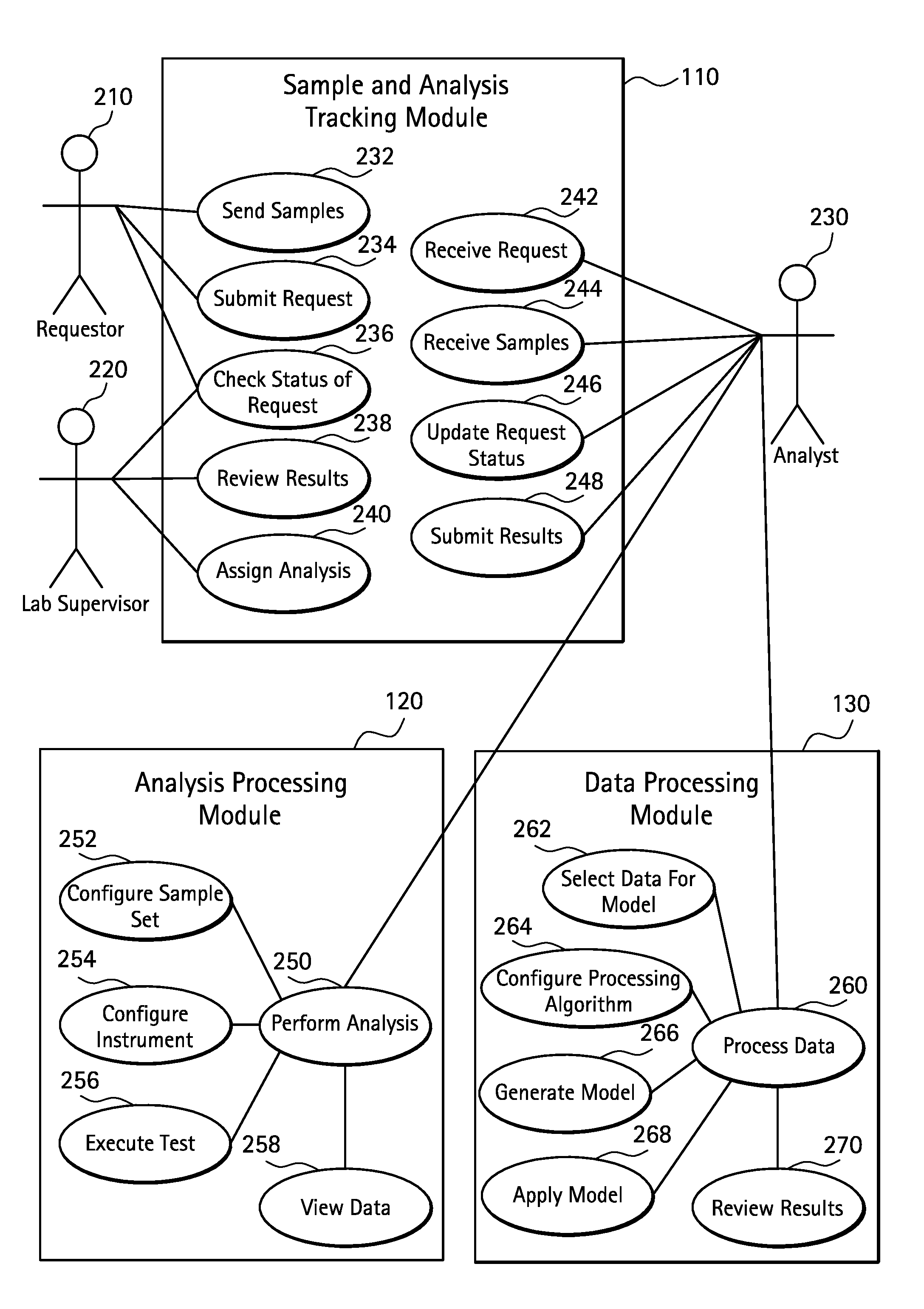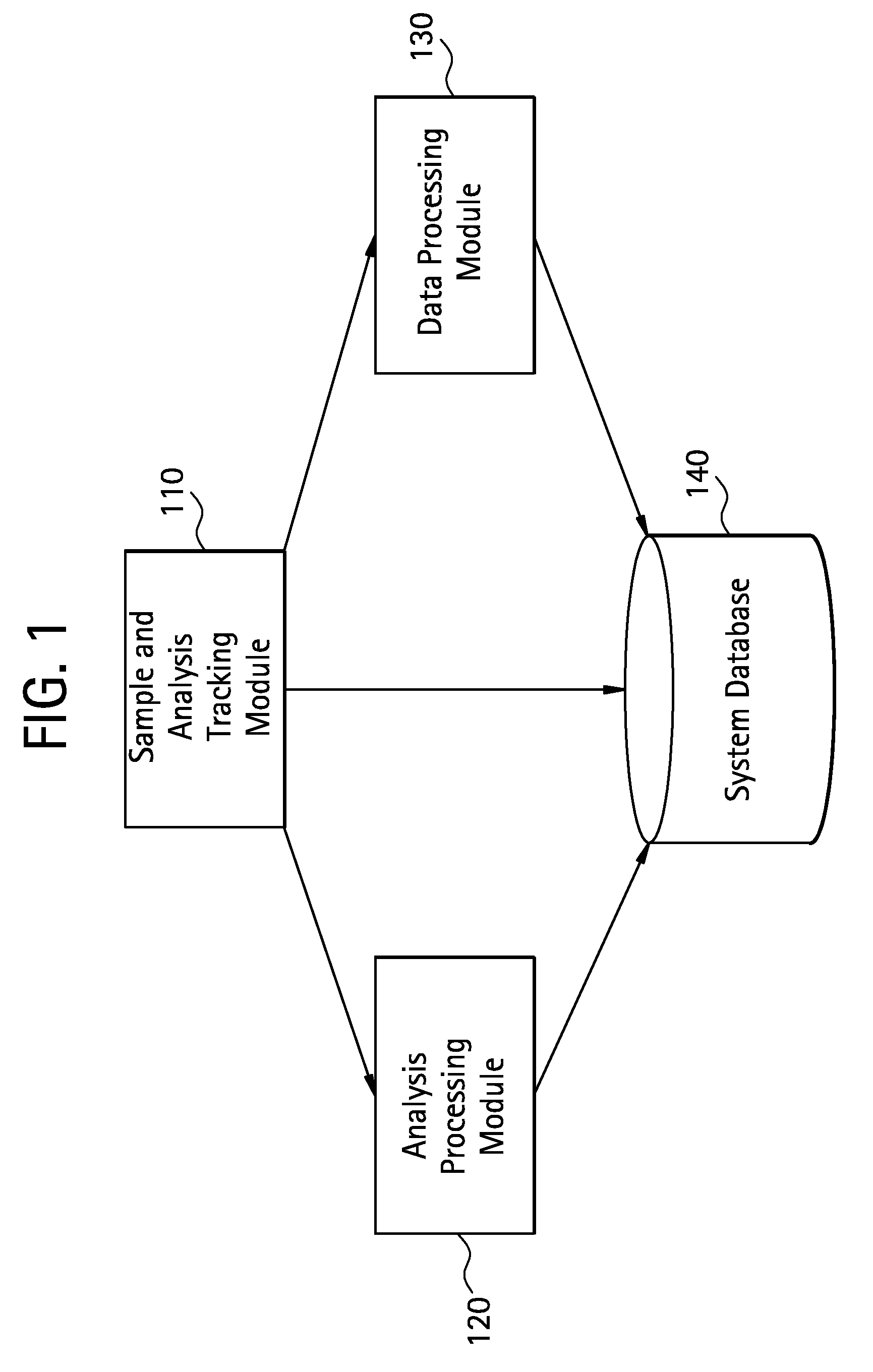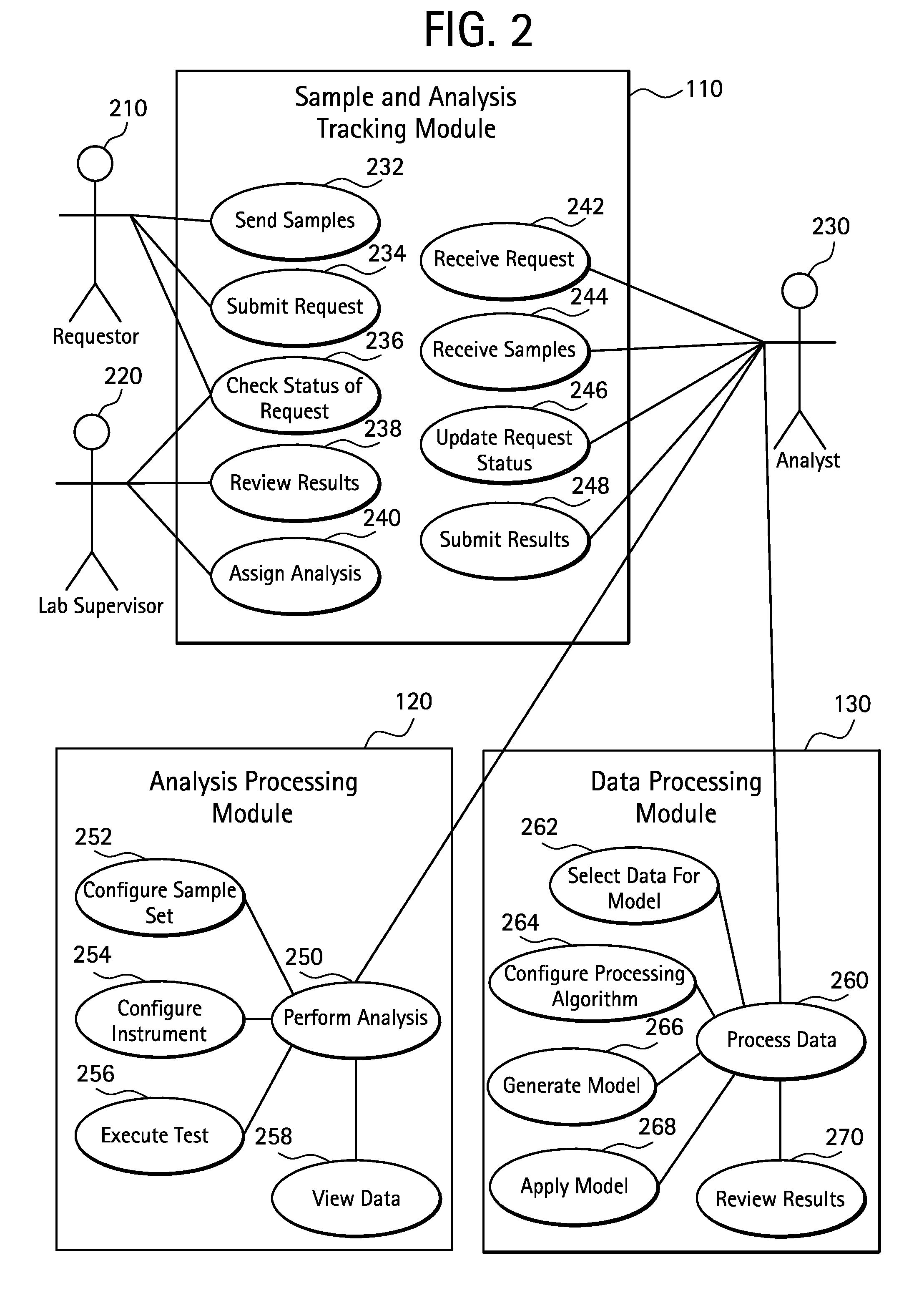System and method for the non-destructive assessment of the quantitative spatial distribution of components of a medical device
a medical device and quantitative spatial distribution technology, applied in chemical machine learning, specific gravity measurement, instruments, etc., can solve the problems of ischemic injury, stroke or myocardial infarction, angioplasty is the abrupt closure of the vessel, and chronic problems such as restnosis, and achieve high throughput raman
- Summary
- Abstract
- Description
- Claims
- Application Information
AI Technical Summary
Problems solved by technology
Method used
Image
Examples
Embodiment Construction
[0052]The schematic diagram of the system of the present invention is set forth FIG. 1. There are three separate modules and a system database. Sample and analysis tracking module 110 enables the user of the system to input data regarding the sample to be analyzed and tracks the progress of the sample through the analysis process. The sample and analysis tracking module 110 will store information about the sample such as a description of the sample (formulation of API and matrix components and process type of sample device), fabrication date, and the analysis date in the system database 140. The analysis processing module 120 comprises an instrument to collect the data and a also retains a description of how the data is collected including the type of instrument, sample positioning, number of observations, and type of data collected. The data processing module 130 processes the data collected from the analysis processing module 120 analytically. The output from the data processing m...
PUM
 Login to View More
Login to View More Abstract
Description
Claims
Application Information
 Login to View More
Login to View More - R&D
- Intellectual Property
- Life Sciences
- Materials
- Tech Scout
- Unparalleled Data Quality
- Higher Quality Content
- 60% Fewer Hallucinations
Browse by: Latest US Patents, China's latest patents, Technical Efficacy Thesaurus, Application Domain, Technology Topic, Popular Technical Reports.
© 2025 PatSnap. All rights reserved.Legal|Privacy policy|Modern Slavery Act Transparency Statement|Sitemap|About US| Contact US: help@patsnap.com



